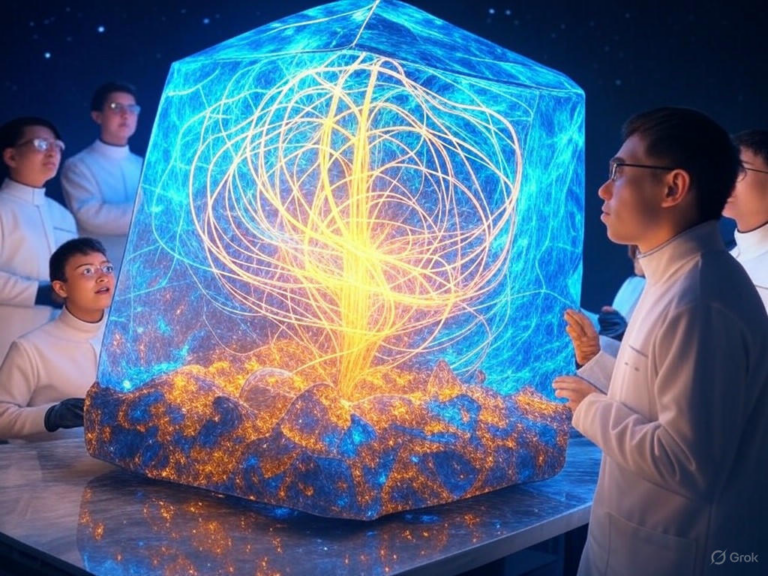
Quantum Particles Explain Light Interference Patterns Effectively
Introduction to Light Interference Patterns
Imagine standing in a darkened room, watching ripples on a pond overlap to create mesmerizing patterns—that’s the essence of light interference. For centuries, these quantum particles explain light interference patterns effectively through the behavior of photons, challenging what we thought we knew about waves and particles. In quantum mechanics, photons don’t just travel as straightforward entities; they reveal interference through wave-particle duality, blending the predictability of waves with the discreteness of particles.
This concept, rooted in groundbreaking experiments, shows how single photons can produce complex patterns on their own. Have you ever wondered why light doesn’t always act predictably? It’s because quantum particles, like photons, interfere with themselves, creating bright and dark bands that echo through modern physics.
The Double-Slit Experiment: A Quantum Particles Approach
The double-slit experiment stands as a timeless demonstration of how quantum particles explain light interference patterns. Picture a laser beam hitting a barrier with two slits: the light spreads out, forming alternating bands on a screen that look like waves colliding. This setup, first explored in the 1800s, now highlights photons as the stars of the show, interfering in ways that defy classical views.
What’s truly mind-bending is how this experiment evolves when we zoom into the quantum world. Instead of waves alone, quantum particles explain light interference patterns by showing photons acting as both particles and waves simultaneously.
Particle Behavior in the Double-Slit Setup
- When we fire photons one by one, an interference pattern still emerges over time, as if each particle is meddling with its own path. This gradual buildup turns a simple screen into a canvas of quantum mystery.
- Think about it: each photon lands on the screen in a spot that contributes to the overall pattern, without needing other photons to interfere directly. If you add a detector to track which slit the photon goes through, though, the pattern vanishes, leaving just two bright spots. It’s like the act of watching changes the game entirely.
- This observation underscores how quantum particles explain light interference patterns, relying on probabilities rather than fixed paths. Why does measurement disrupt things? It’s a question that keeps physicists up at night.
Wave-Particle Duality in Action
Here, wave-particle duality takes center stage, where light behaves like a wave to create interference but arrives as discrete particles. Ever tried explaining a magic trick? That’s what this feels like—photons seem to travel through both slits at once, only to show up as single points on detection. This duality is key to understanding how quantum particles explain light interference patterns, bridging the gap between everyday waves and quantum oddities.
Quantum Particles and the Emergence of Interference Patterns
Delving deeper, recent studies confirm that quantum particles explain light interference patterns through superposition, where a single photon exists in multiple states until measured. This means particles don’t follow a single route; they explore possibilities, leading to those familiar bright and dark bands. It’s not about waves crashing—it’s about probabilities shaping reality.
- In constructive interference, superposed states amplify the chances of detection, filling in the bright bands with more particle hits.
- Conversely, destructive interference sees those states cancel out, leaving dark bands where photons are less likely to appear. This probabilistic dance is how quantum particles explain light interference patterns, moving us away from deterministic physics.
- A hypothetical scenario: imagine a photon as a choose-your-own-adventure story, where every path influences the ending. That’s the quantum edge in action.
Quantum Measurement: How It Alters Interference
One of the most intriguing aspects is how measurement can upend everything. When we try to pinpoint a photon’s path, the interference pattern dissolves, proving that observation isn’t passive. This observer effect shows quantum particles explain light interference patterns only when left undisturbed, highlighting the delicate balance in quantum systems.
It’s like peeking at a surprise party ruins the fun—the act changes the outcome. For anyone curious about quantum mechanics, this raises a big question: does our involvement reshape reality itself?
Comparing Classical and Quantum Explanations of Interference
Let’s break down how classical wave theory stacks up against the quantum view. In the classical world, light is a continuous wave, with interference from overlapping fronts. But quantum mechanics flips this: quantum particles explain light interference patterns via individual photon probabilities, not just wave overlaps.
| Classical Wave Theory | Quantum Particle Theory |
|---|---|
| Views interference as waves merging, with dark areas as energy voids. | Sees quantum particles explain light interference patterns through probability clouds, where particles might still exist in “dark” spots but are unlikely to be detected. |
| Lacks explanation for single-particle effects or how observation matters. | Accounts for self-interference and the collapse of states upon measurement, offering a more complete picture. |
| Assumes deterministic outcomes. | Embraces randomness, where quantum particles explain light interference patterns statistically. |
This comparison isn’t just academic—it’s a gateway to appreciating quantum innovations. Which approach do you find more intuitive?
Extending Interference Beyond Just Photons
The magic of interference doesn’t stop at light; quantum particles explain light interference patterns in ways that extend to electrons and even larger molecules. Experiments with electrons show similar patterns, reinforcing quantum mechanics’ universal appeal. If photons can do it, why not atoms?
- Electrons, when sent through double slits, build interference patterns just like photons, proving particles of matter aren’t exempt.
- Even hefty molecules with thousands of atoms display this behavior, though it requires precise conditions. This scalability hints at how quantum particles explain light interference patterns across scales, from tiny to almost macroscopic.
- Consider a real-world analogy: it’s like waves in traffic forming patterns, but on a quantum level, where cars (particles) decide paths probabilistically.
Implications for Physics and Technology
Beyond theory, understanding how quantum particles explain light interference patterns drives real-world tech. From quantum computing to secure communications, these principles power qubits and encryption methods. It’s not just about light—it’s about harnessing uncertainty for innovation.
Key Takeaways for Future Research
- Quantum insights continue to resolve historical debates, building on the work of giants like Einstein and influencing new experiments.
- As we scale up tests, we might even see interference in everyday objects, expanding how quantum particles explain light interference patterns and beyond. What could this mean for your daily life?
Conclusion
In wrapping up, quantum particles explain light interference patterns in a way that transforms our grasp of the universe, emphasizing wave-particle duality and the power of observation. This isn’t just science—it’s a reminder of how curiosity can lead to breakthroughs. If you’re intrigued, share your thoughts in the comments or explore more on quantum topics. What’s one quantum concept you’d like to learn next?
References
- Quantum particles alone can explain light interference patterns – Earth.com
- What Is Quantum Interference and How Does It Work? – SpinQuanta
- Double-slit experiment – Wikipedia
- Quantum Interference Explained (YouTube video)
- Quantum Interference: A Simple Example – Prof. Matt Strassler
- Quantum Computing and Interference – Scott Aaronson Blog
- Quantum Interference of Light – LibreTexts
- Advanced Quantum Interference Studies – ACS Publications
quantum particles explain light interference patterns, wave-particle duality, double-slit experiment, quantum mechanics, photon behavior, quantum superposition, observer effect, interference patterns, quantum computing, modern physics







